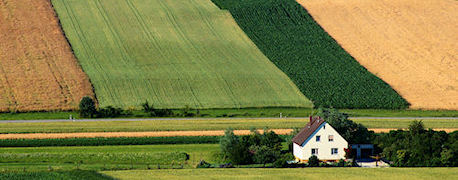
Some forward-thinking folks are looking beyond the super-stacked hybrids and multi-mode action of crop chemicals when discussing highly productive fields.
At the annual Minnesota Crop Improvement Association meeting this winter, Don Wyse, co-director of the University of Minnesota Center for Integrated Natural Resources & Agricultural Management, offered thoughtful discussion on the development of new seed crops for the state.
The effort he proposes, called the "Forever Green Agriculture Initiative," is a 10-year research effort that would identify winter annual and perennial crops that would be sown after summer annuals are harvested so ground is covered over winter. Research has shown that these new production systems would enhance yields of summer-annual crops, enable production of new commodities, enhance our soils and wildlife, and improve our water resources.
These are several practical suggestions to current discussions and concerns that have been taking place around the world for some time. U.S. food production has been and will continue to be under the microscope as the public grapples with concerns about population growth, hunger, climate change, crop genetic advancements and environmental impacts.
"How do you balance ecosystem services with productivity and profit?" Wyse asked, noting that this is the main challenge farmers face. He defined ecosystem services as nutrient cycling, production of food and fuel, pollution regulation and cultural/natural resources (clean water, land, hunting).
"I am convinced—and other around the globe are, too—that we cannot [maintain a balanced ecosystem and feed the world] with the limited amount of germplasm we have today," he said.
Plus, changes in Midwest farming over the last 70 years have made a negative impact on soil and water. High-input, simplified production systems involving limited tillage, two crops, one herbicide and no livestock production have dramatically changed the landscape and soil health.
"We in ag have looked at one area in ecosystem services and ignored the others," he said. "We need a broad mindset now."
Simply put, crop ground needs diversity and continuous soil cover.
Wyse said that scientists around the world are thinking about agriculture in this comprehensive way. Specifically at U-M's CINRAM, researchers with the College of Food, Agricultural and Natural Resources Sciences, the Ag Experiment State, Extension and the College of Biological Sciences are proposing projects that seek a 10-year investment totaling $14 million that would pay for additional staff—two scientists, 19 post-doc, graduate and undergrad students, and two regional Extension faculty—and research operating expenses.
Wyse said these new production systems would have state-wide impact. They would:
•Diversify economic opportunities for Minnesota's farmers, through the production of new sources of food, feed, and high-value biomaterials, without interfering with current annual production systems.
•Improve the condition of vital resources including water, land and biodiversity.
•Enable abundant production despite climate variability and new pest and disease pressures.
•Enhance rural committees by creating new industries based on renewable agriculture resources- and employment opportunities.
•Attract high quality talent to the University of Minnesota to meet the future workforce needs of the agriculture, food, energy and natural resource based industries in Minnesota.
Wyse said two kinds of research and development are needed for the initiative to be successful: genetic improvement of plant materials and development of new economic opportunities based on these systems.
The practical research needed would focus on new breeding technologies to rapidly improve cold-tolerant annual specifies used as winter-annual crops and perennial woody and herbaceous species.
To do this, Wyse and his colleagues believe that breeding programs, associated agronomic research and Extension programs must be expanded and intensified, as must be undergraduate and graduate education on breeding and management of these species. Hence, the request for the $14 million over 10 years.
About the Author(s)
You May Also Like






